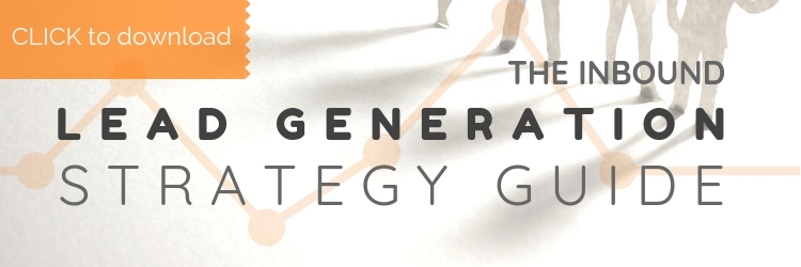
Are you trying to quantify your marketing department's time spent on Facebook?
Your social media marketing strategy may not be the reason why it's so difficult to draw the line between investment and results. It's more likely an issue with how it fits into the overall game plan.
There are several key areas you can and should focus on to improve your lead and sales conversions before losing heart in your social execution, and I'm going to share my top 4.
(Click HERE to get the full marketing plan that starts with social media and ends with sales)
It's just one piece...
The problem with social media marketing is that it's JUST social media marketing. It's but one piece to the puzzle of intertwining tactics and strategies, and although it's incredibly important, like a corner piece, it's still just a fragment of the overall plan.
Here are four ways you can turn your efforts in social media marketing into quantifiable sales for your b2b.
1: Blog
Do you know why we blog? When I ask this question, most business owners get stumped. A lot of marketers do as well.
A lot of the answers I hear are along the lines of, "we want to be a thought leader," or "we know we should," but neither of those can be really valued, which is why I'm finding most of you tend to shy away from doing it.
And you're right to, because blogging without a strategy is nothing more than a pile of words. Like social media, it doesn't come anywhere near its full potential on its own, and certainly won't be easy to quantify without the rest of the puzzle.
But when you put them together...
Let's look at what you're sharing on social media to start with. Is it mostly ads? Is it mostly self-serving? If so, it's likely because you don't have a blog that educates to share.
Social media is supposed to be social. Spewing ads all day doesn't accomplish that. Sharing other people's content and talking about it does. But we also want people coming to our website, so it's important that some of the educational materials we're putting out there are ours.
(Learn more about blogging strategy with this free playbook)
2: Have content to give away
Step 1 was about getting traffic to your website. Step 2 is about converting it. Most of you are still relying on contact us forms or newsletter sign ups in order to get leads from the traffic coming to your website, but you're missing out on the large bulk of opportunities passing through if that's the case.
How many leads do you get from your website every month as is? 1% of your traffic? Less?
With inbound, we shoot for 5. The reason being that we have dozens of opportunities to convert traffic into leads on our websites and hundreds, if not thousands, of custom paths laid out to get to said conversion points.
It's a chain reaction. Social media grabs people's attention and sends them to your website by leveraging blog posts and other educational content published on your website. Once they read the blog, they can either close the window, or better, if the article resonates, we are ready for them with a button that takes them to a relevant content offer. They click it, fill out the form, get their download, and they are now a lead.
3: Have a follow-up plan
Emails. Calls. Webinars. Meetings. Consultations.
After we have their contact information, the next important step is to have a follow-up plan that can adapt based on where people are in the buyer's journey (more on buyer's journeys HERE).
If somebody downloads a case study or testimonial letter, they are much more likely to be in the decision-making stage, so a call would be more effective than for somebody who downloaded something more surface level.
4: Software
Invest in software that ties everything together for you. This is must. We're trying to draw the line between your social media efforts and revenue growth. We can't do this if we don't have delivery tools that tie it all together.
There are many programs out there, but our favorite is Hubspot. In this program we can schedule posts, blog, create landing pages for our content offers, and send emails.
Best of all, when I look at a lead, I can see their entire history on a single timeline. I know where they came from, when, and what prompted them to connect with us.
(MORE LIKE THIS: The 11 Best Marketing Tools for Inbound & Growth Driven Design)
CONCLUSION:
Social media shouldn't be ignored as a tool for growth, and you're right to be doing it. But it's like ordering jelly without toast when implemented in a silo. If you can add blogging, content offers, and a good follow-up plan, and deliver it through a software program that makes it easy to execute and analyze, well, you're light years ahead of most of your competition who are still tweeting for likes and follows instead of revenue.
Check out our inbound lead generation playbook to see how social media can help your business grow:


